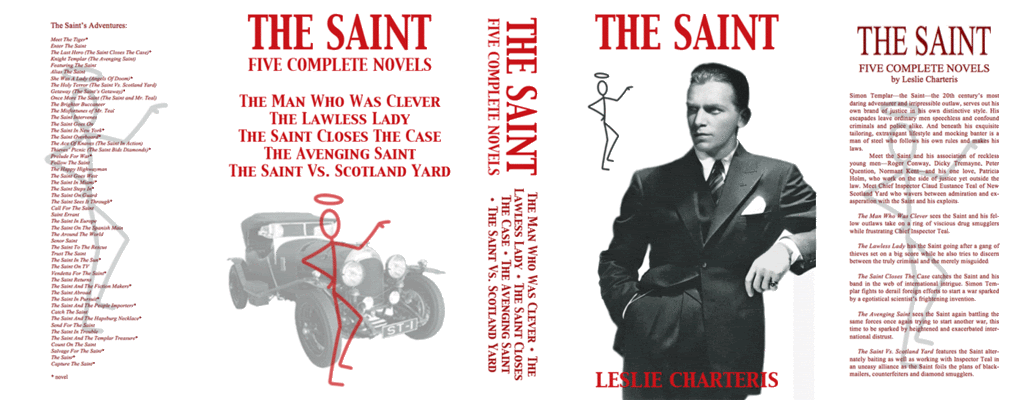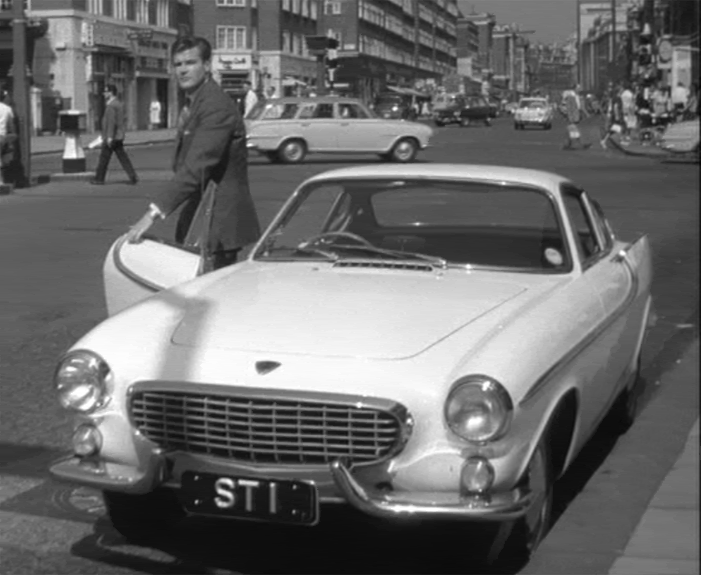Moore sounds like the Saint to me, and his portrayal is more in vein of the later Saint books from the '40s onward when Simon Templar seems to have mellowed a touch. But the early Saint books of the '30s give Templar something akin to a manic energy. He is irrepressable. The books' Simon Templar could also on occasion be quite a cold and ruthless character---he could have quite a dangerous edge to him which may or may not have come across in the Moore series. Indeed Moore's portrayal of Bond at times was also very much like the Saint of the books.I must admit to never having read the books, so my only experience of the character is the Roger Moore version. So I don't know how book-accurate it is. Nonetheless, it is an enjoyable series.
In the books there is a phrase used once or twice: he had a saintly way of doing unsaintly things. The literary Saint rarely batted an eye or gave too much thought to one of the ungodly meeting his demise.
In the books, particularly during the '30s, it's never really whitewashed that Simon Templar is a crook. His distinction is that his victims are other criminals and the corrupt. In the '40s there are vague references that Templar is connected to American and British secret services, giving him something of a pass in how he went after the baddies. Both TV series don't really play up Templar's past, but rather come in when he's more widely known and vaguely respectable. For myself I think the best stories are generally from the '30s when he's feared and wanted by the cops as much as the criminals.
It's a little tough to imagine a character like the Saint today because crime fighting resources are so much more sophisticated today. That's partly why I would relish seeing a period piece Saint film because it puts the character back in the era when his wits and resourcefulness could really shine. I suppose it's akin to why some of us like shows like Murdoch Mysteries partly because of the appeal of seeing intellect and resourcefulness at work rather than gadgetry. A period piece would also have more of a romanticized air to it unlike a familiar contemporary setting.
And the Saint was always meant to be a romanticized character.
Here's a quote from a review on Amazon that sums up the literary Saint nicely:
"Meet The Tiger (later retitled The Saint Meets The Tiger) published in 1928, was Leslie Charteris's first book in the Saint saga (even though Hodder & Stoughton later pretended that Enter The Saint was, presumably because they weren't the publishers of the former).
Nevertheless, Enter The Saint is the book that introduces Simon Templar as he is in most of the books that follow, and as neither the cinema nor television has yet had the nerve to portray him: he beats people up, robs them, blackmails them, even murders them, and gets away with it. And the fact that his victims are particularly vicious thugs (Snake Ganning), dope dealers (Edgar Hayn), white slavers, war profiteers and so forth - and that he gives a large chunk of his profits to charity - would not excuse him to a strict moralist. The success of the Saint books for seventy years must mean that strict moralists are perhaps not as common as one ought to hope."


 I was hoping to evoke Simon Templar as he could have looked like in those days. Candidly I don't really think George Sanders ever really looked the part---he looked rather too soft and ordinary, he just didn't have that edge.
I was hoping to evoke Simon Templar as he could have looked like in those days. Candidly I don't really think George Sanders ever really looked the part---he looked rather too soft and ordinary, he just didn't have that edge.


